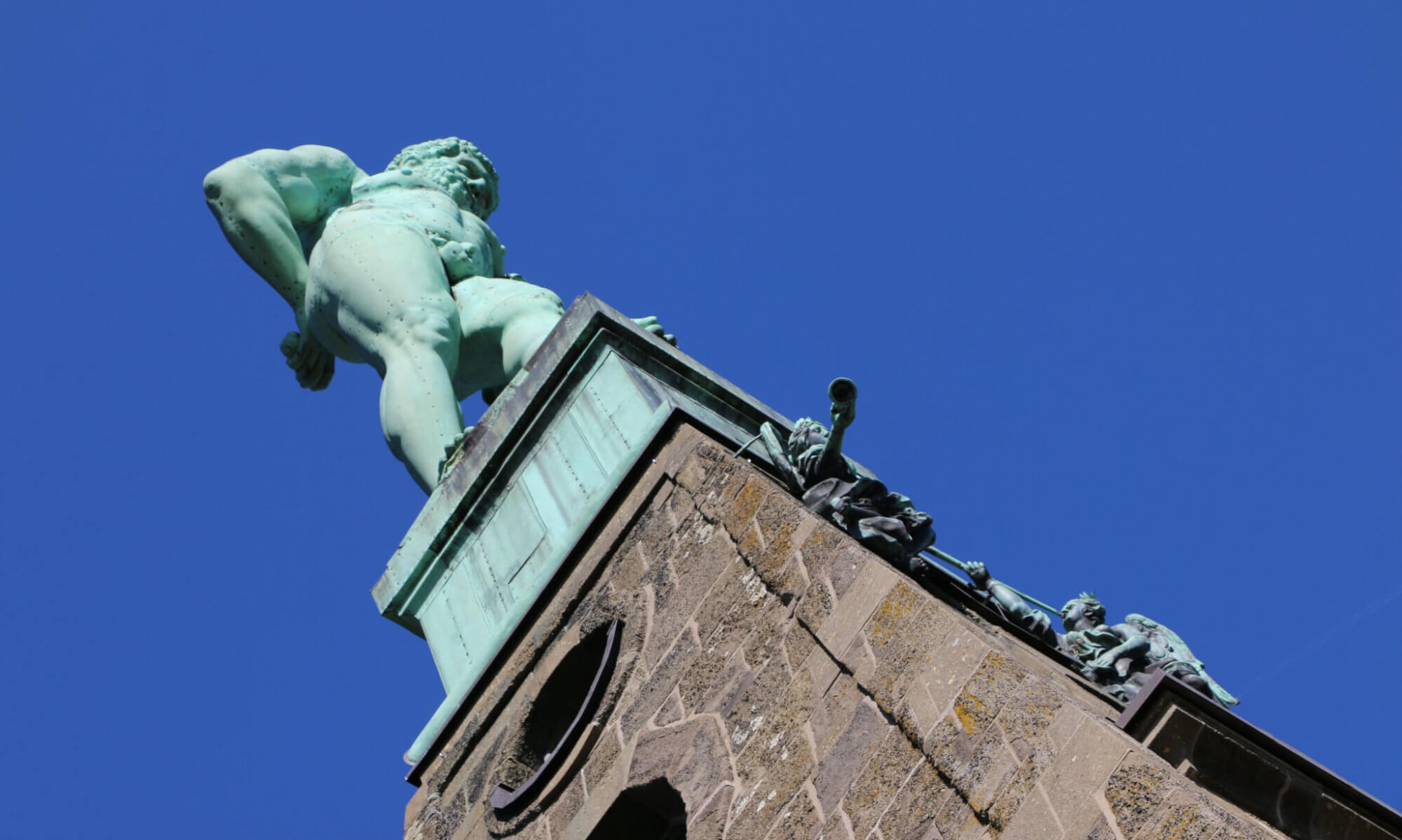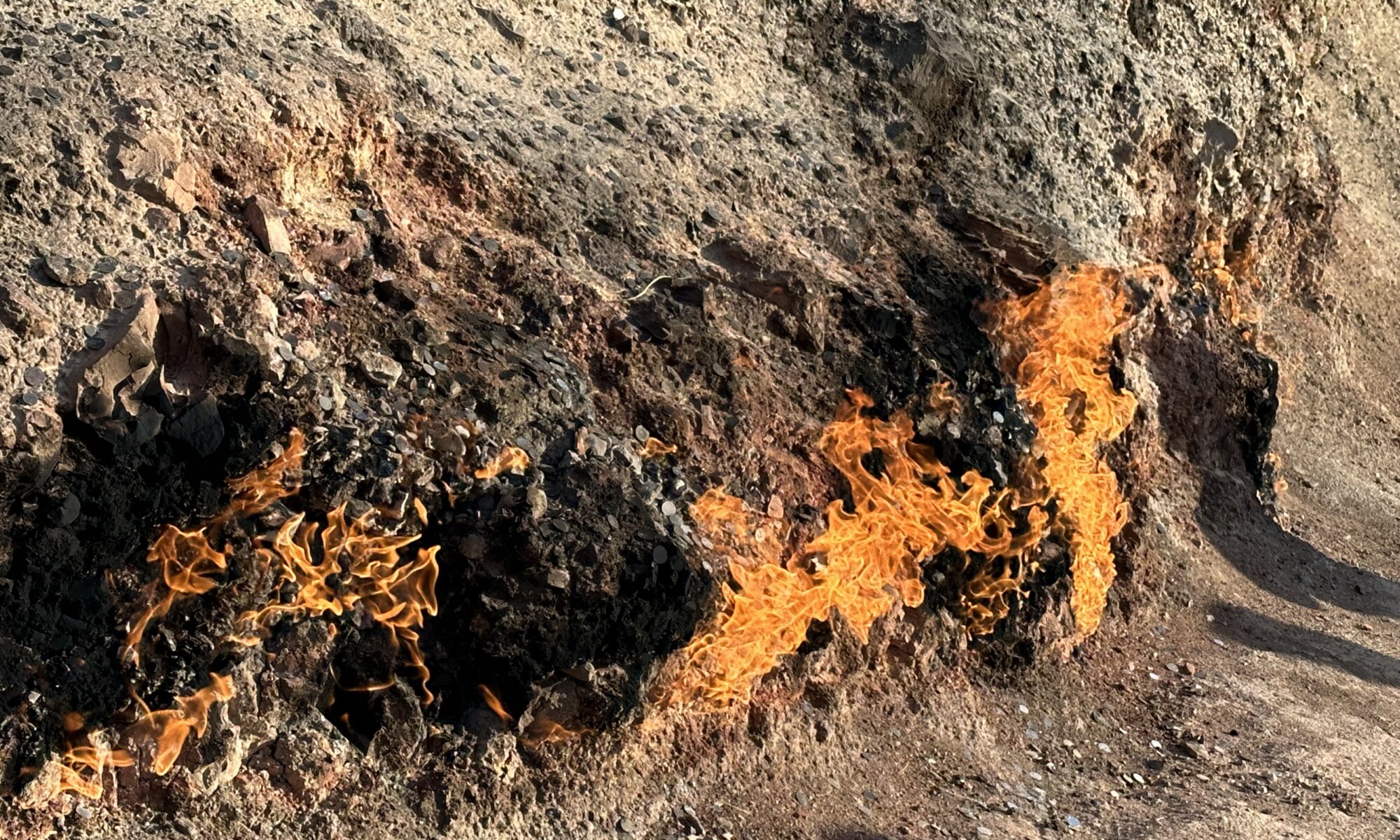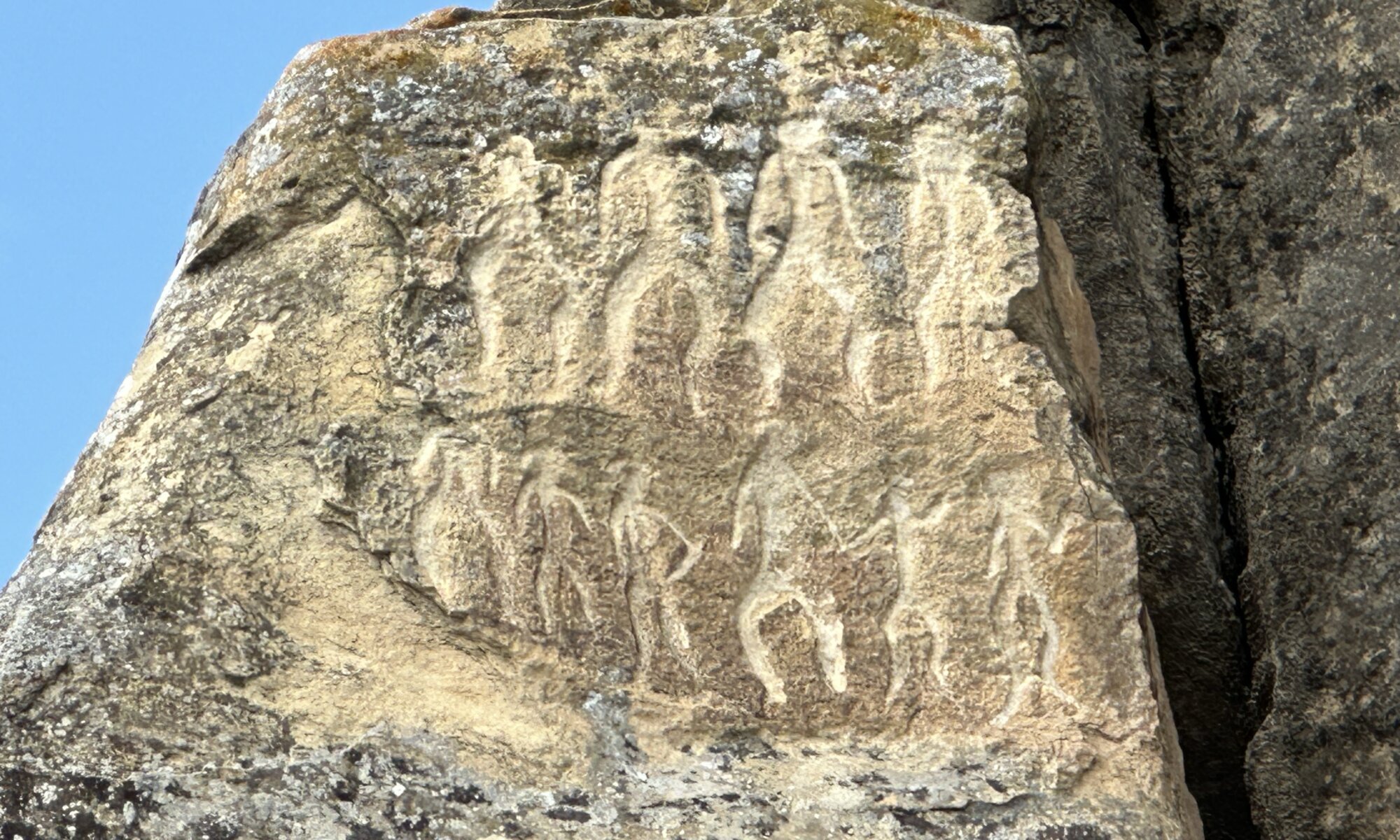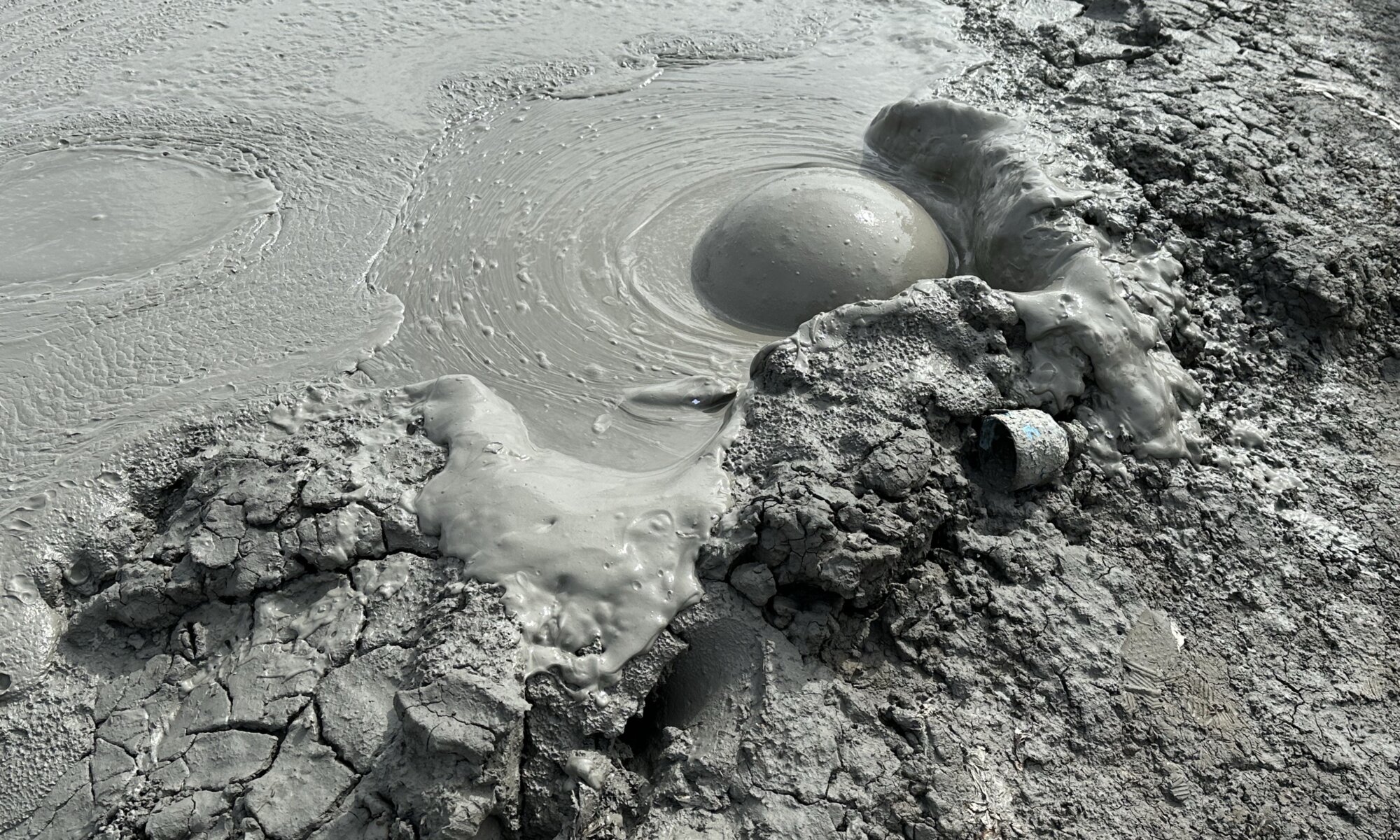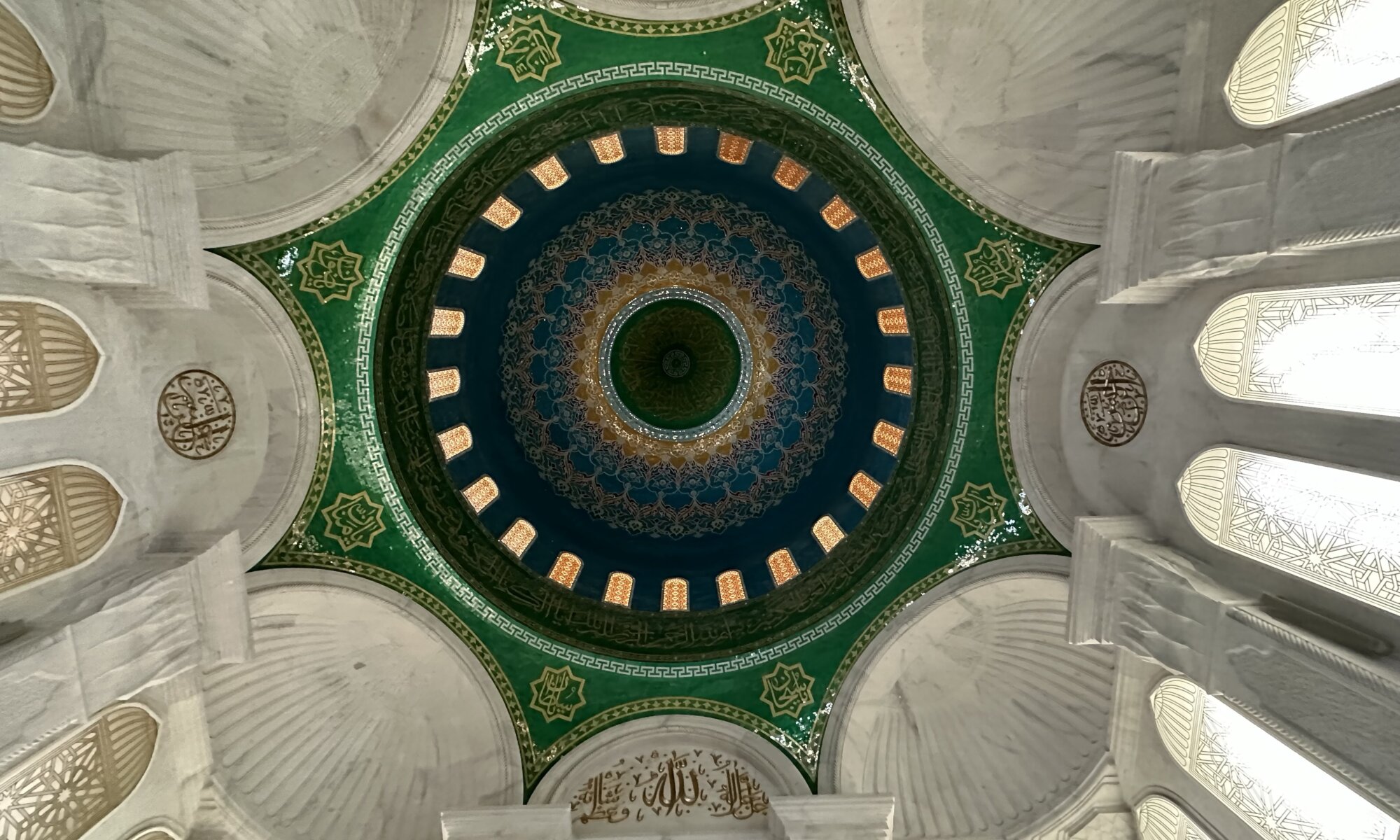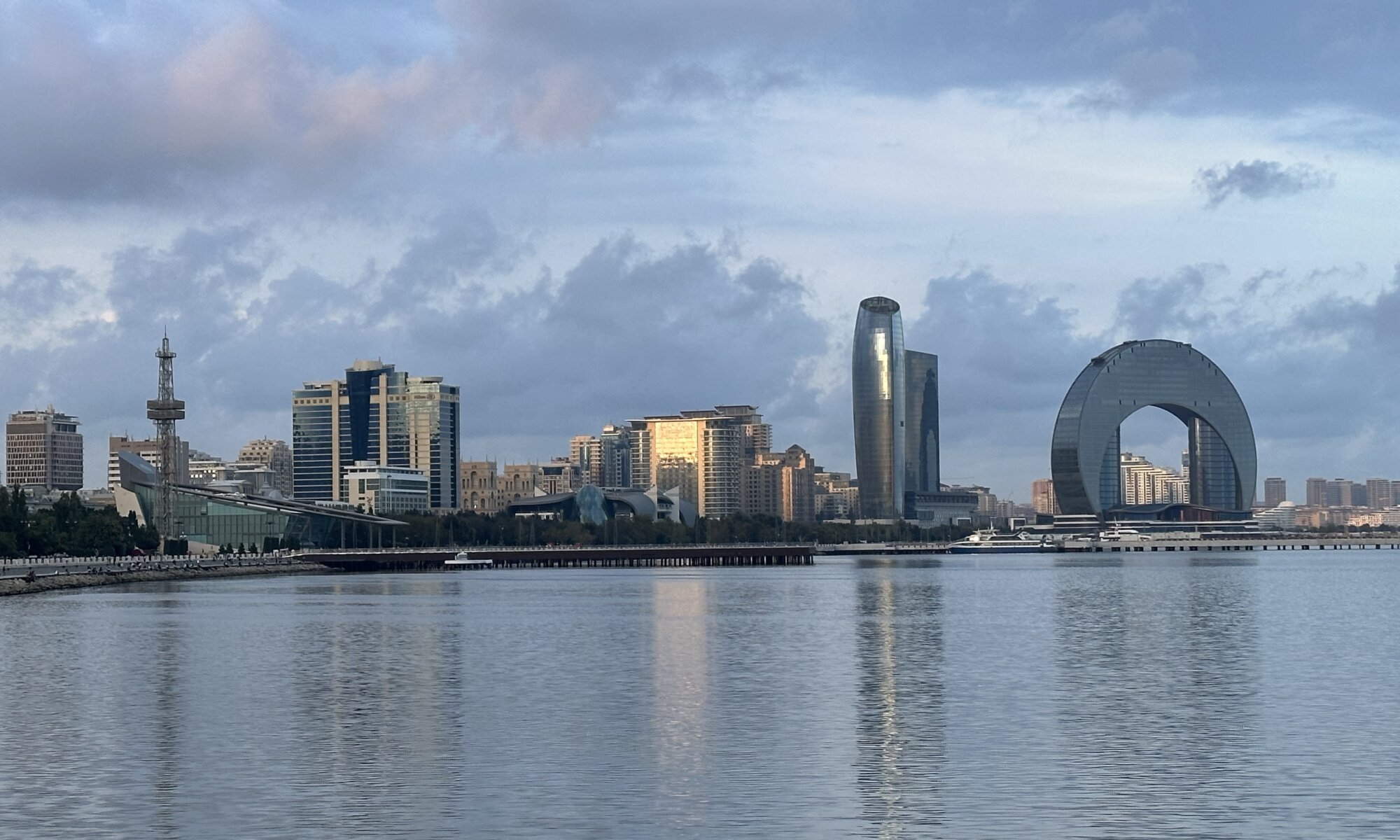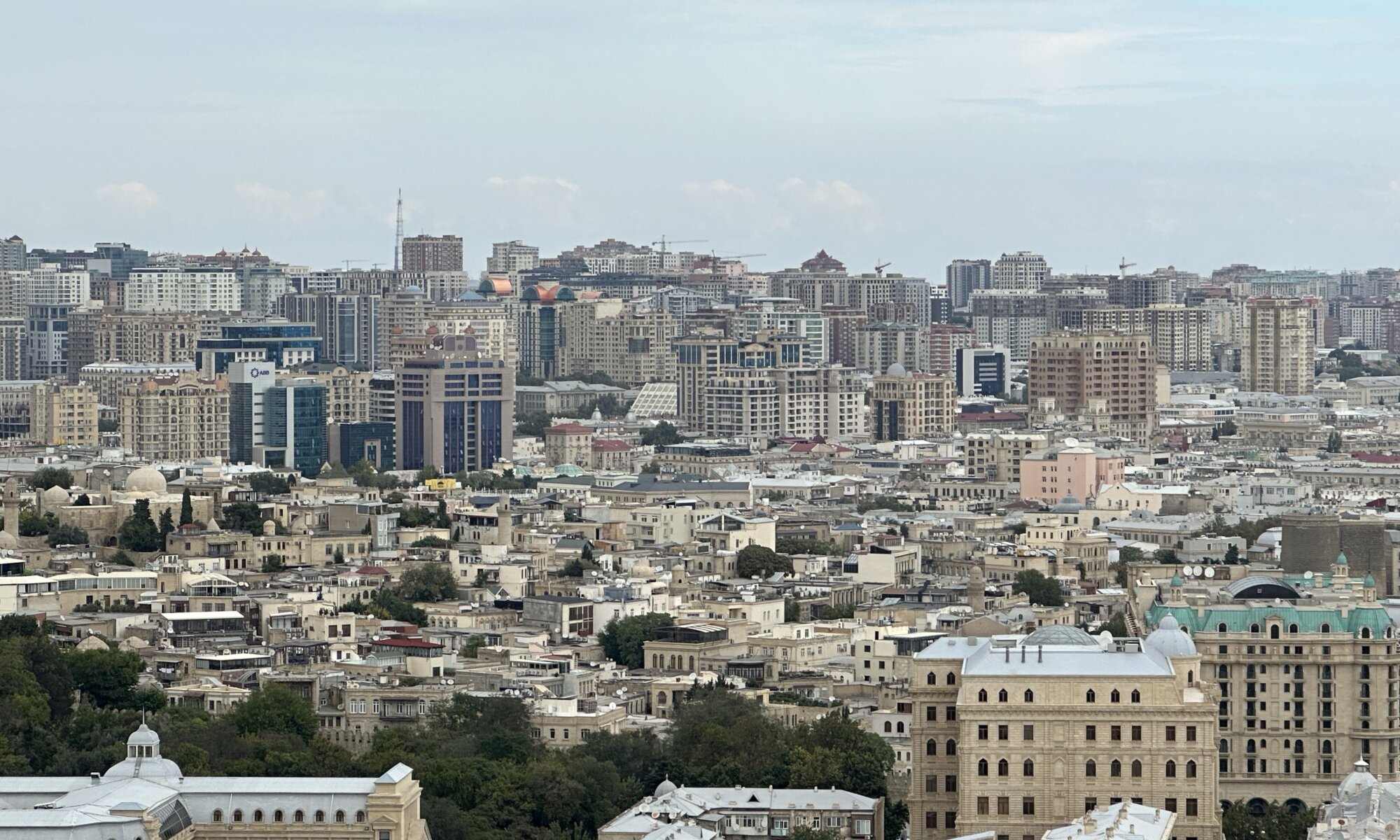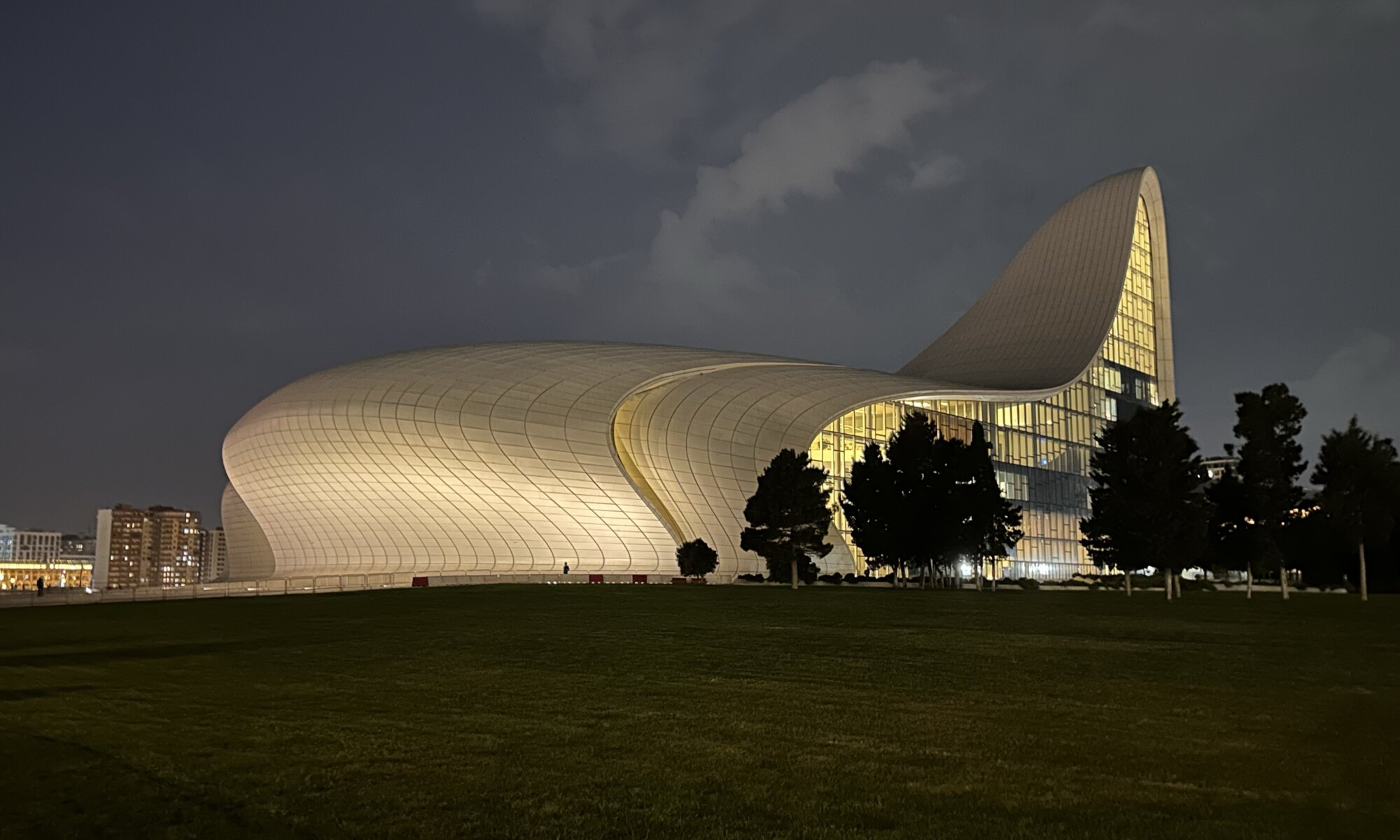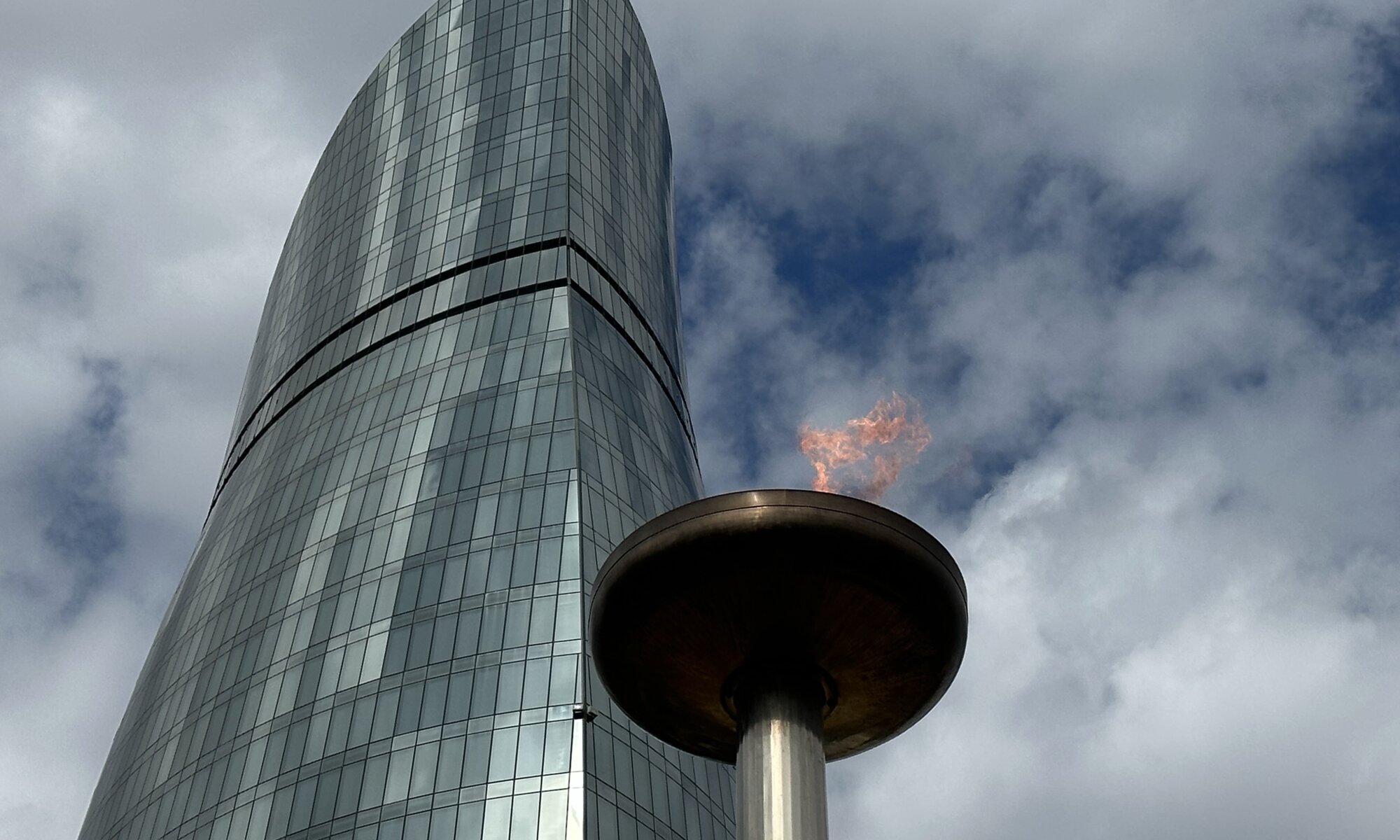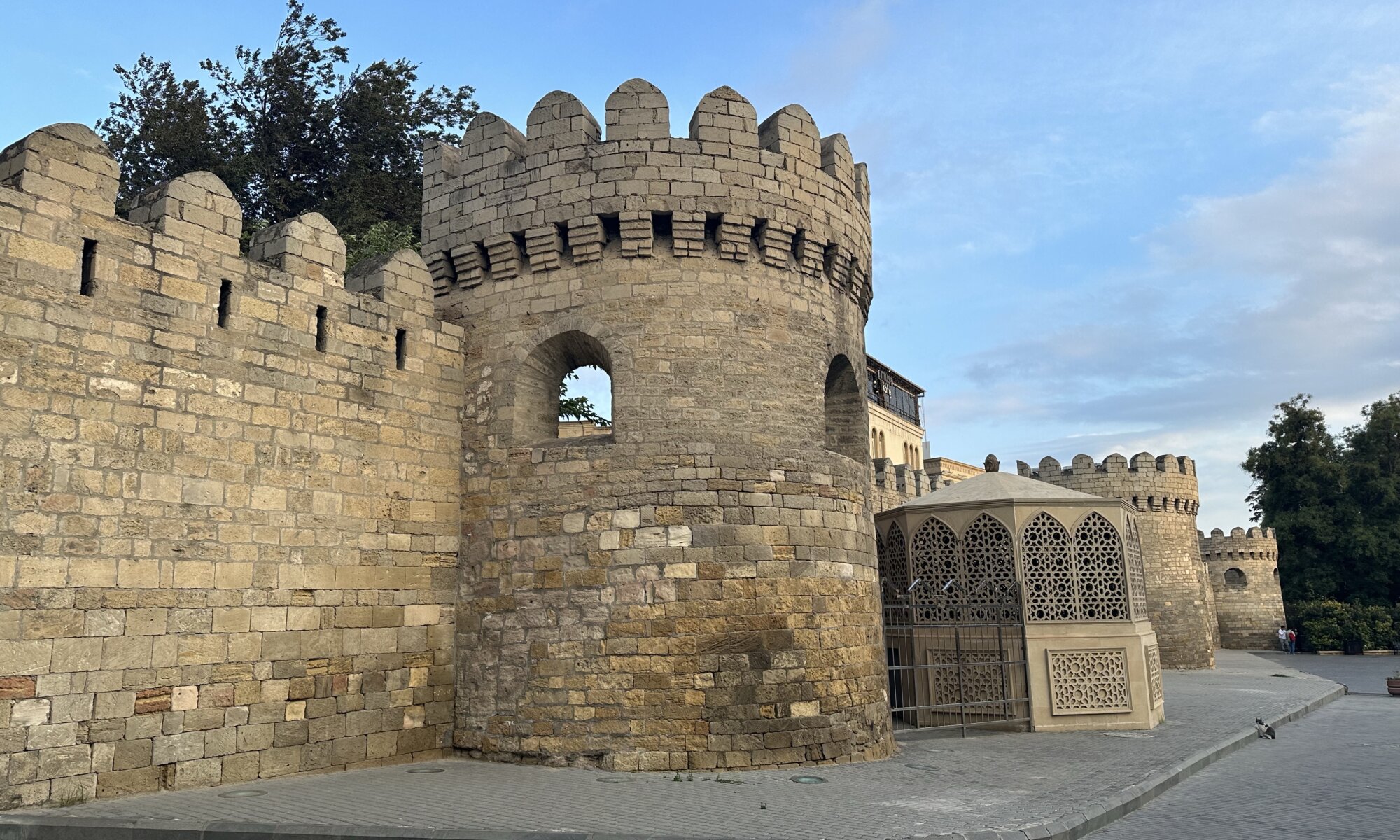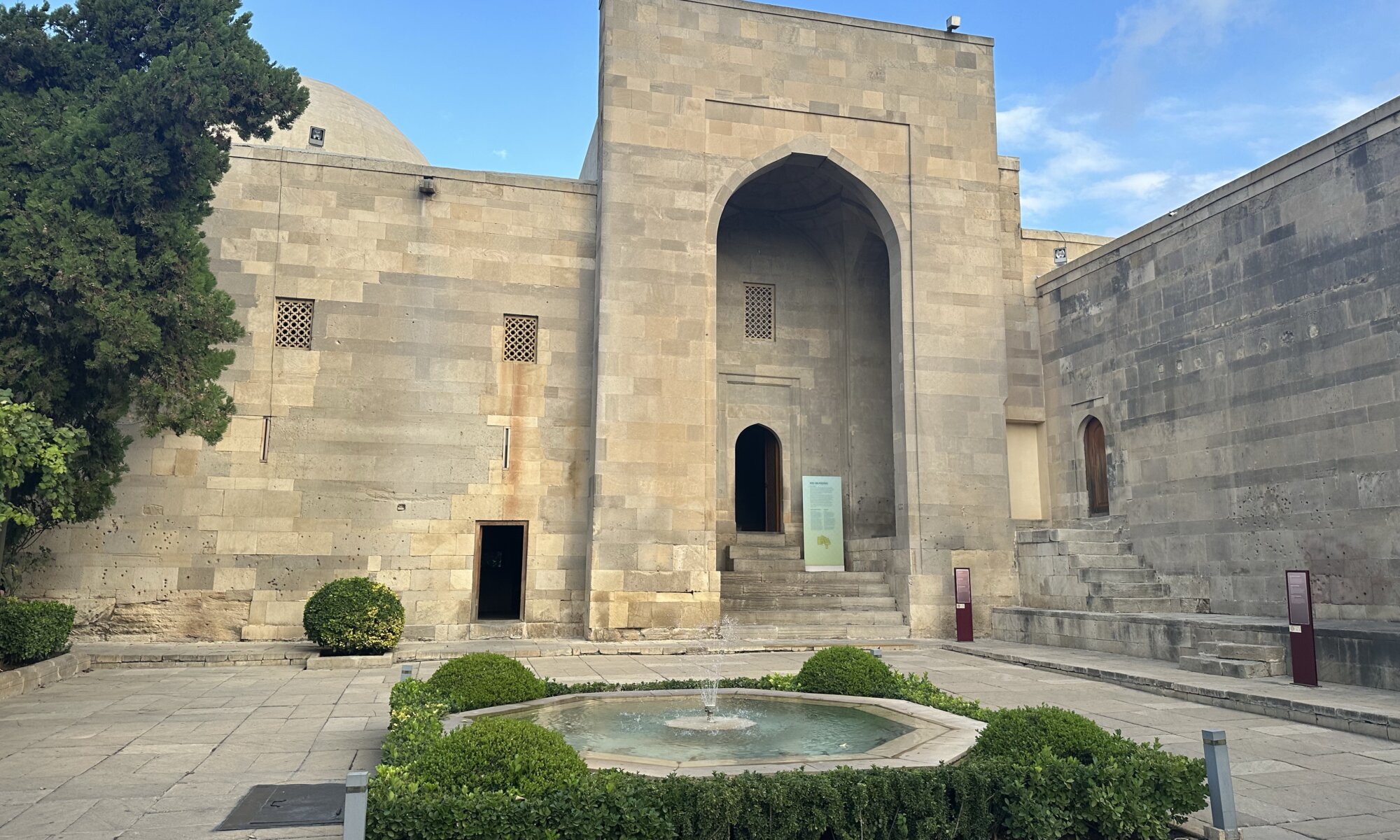Well, it is a burning mountain. As simple as that, as unusual as that. At Yanar Dağ near Bakı, natural gas is continuously floating out of the ground and there are different myths who first set it on fire. Now people travel to this burning mountain and admire the flames.
Continue reading “Yanar Dağ”Petroglyphs
The Qobustan area has seen human settlements rather early in history. Witnesses of that are ancient carvings from pre-historic times at the stones close to the Caspian sea, so called petroglyphs. These depictions of bulls, camels, ritual dances and riding humans date back to 5,000 to 20,000 BCE. The petroglyphs have been created by the people living in that area and they give insight into ancient life.
Continue reading “Petroglyphs”Mud volcanoes
Muddy fields decorated with volcanoes that don’t produce lava but mud, that is the Qobustan area close to Bakı. Every now and then a large bubble appears in the mud and disappears again – that is because of natural gas streaming out of the ground and through the mud. While the rest of the world tries to get methane to heat their homes it is popping up here uncontrolled and vanishes into the atmosphere.
Continue reading “Mud volcanoes”Bibi Heybat mosque
Azerbaijan is a secular country not having a stake in religious matters. There are some Russian orthodox Christians, a large Jewish community focused on Bakı – but the majority of Azeris are Muslims belonging mostly to Shia Islam. Therefore you’ll find different mosques throughout Bakı; the biggest and most modern one is the Bibi Heybat mosque outside of the city.
Continue reading “Bibi Heybat mosque”Caspian sea
The Caspian sea (Xəzər dənizi) is no sea, it is the largest lake on the planet. It has no connection to an ocean, is 371,000 square kilometres large and one kilometre deep at the lowest point. Countries around the lake are Azerbaijan, Russia, Kazakhstan, Turkmenistan and Iran. The Caspian sea is an important economic resource for those countries; it is used for fishing but especially for gaining crude oil and natural gas.
Continue reading “Caspian sea”Dağüstü
The Dağüstü park of Bakı is located on one of the highest hills of the city and close to the city center. Most people get up there to enjoy nice views on the old town (İçərişəhər) and the Caspian sea. But the area has more to offer than that: up there you’ll find the parliament building, the Flame towers, a Turkish mosque with rich decorations and the alley of the martyrs (Şəhidlər Xiyabanı) which includes around 15,000 graves.
Continue reading “Dağüstü”Heydər Əliyev Mərkəzi
The most impressive modern building at Bakı is the Heydər Əliyev Mərkəzi: a cultural center built until 2012 and named after the former president Heydər Əliyev (reigning from 1993 to 2003). It was designed by star-architect Zaha Hadid and opened by president İlham Əliyev, the son of Heydər Əliyev. It looks like a giant sculpture without right angles and flat surfaces. The cultural center includes the national museum, exhibition and concert halls as well as a library.
Continue reading “Heydər Əliyev Mərkəzi”Flame Towers
The modern icon of Bakı has been built between 2007 and 2013 on a hill close to the old city center. The three Flame Towers are between 160 and 182 meters high and copy the structure of – surprise: flames. In daytime they’re just strangely shaped skyscrapers dominating the skyline. After sundown they become screens that show three things continuously rotating: the Azerbaijan flag, people weaving the Azerbaijan flag and most impressive, huge flames.
Continue reading “Flame Towers”İçəri Şəhər
Bakı, the capital city of Azerbaijan, has in most parts a very modern face: mostly the money gained by SOCAR (the State Oil Company of Azerbaijan Republic) which owns all oil and gas resources of the country has driven the development of high skyscrapers and special architectures often created by international architects. And that is nothing new: it started with the first drilling for oil in 1846. The Nobel family (today known for the science and peace prizes of Oslo) came to Bakı and founded the Nobel Brothers Petroleum Producing Company.
Continue reading “İçəri Şəhər”Şirvanşahlar
The palace of the Shirvanshah at the historic city center (İçəri Şəhər) of Bakı is the perfect place to re-enact the folktales of One Thousand and One Night. It is a wonderful palace on a hill with strong fortifications, Arabic decorations, a garden, the mausoleum, a mosque and the beautiful Murad gate. Very good reasons for a visit and for including it into the list of UNESCO World Heritage sites in the year 200.
Continue reading “Şirvanşahlar”